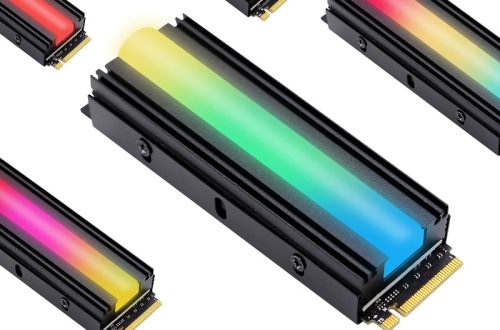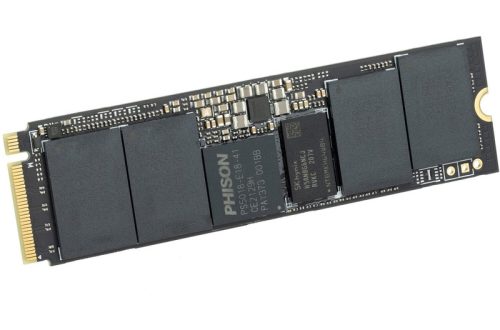Part 1: The Beginning of Sound Amplification
Sound amplification has a long and fascinating history that dates back to the late 19th century. The first known patent for an electric amplifier was filed by Thomas Edison in 1875. However, it was not until the early 1900s that amplifiers became more widely used. In 1906, Lee De Forest invented the triode, a vacuum tube that could amplify electrical signals. This invention revolutionized the way sound could be amplified, and it led to the development of the first electronic amplifiers.
1. The Triode: A Revolutionary Breakthrough
The invention of the triode by Lee De Forest marked a pivotal moment in the history of sound amplification. This vacuum tube, consisting of a cathode, a control grid, and a plate, revolutionized the ability to amplify electrical signals. By controlling the flow of electrons between the cathode and plate, the triode could amplify weak input signals into much stronger output signals.
This groundbreaking invention laid the foundation for the development of electronic amplifiers, devices that have become ubiquitous in modern technology. The triode’s ability to amplify signals enabled the creation of a wide range of audio equipment, from radios and phonographs to public address systems and musical instruments.
2. Early Uses of Amplifiers: Shaping the Technological Landscape
In the early 20th century, amplifiers played a crucial role in the development of several emerging technologies. The radio industry, in particular, relied heavily on amplifiers to increase the strength of radio signals and transmit them over long distances. By amplifying the weak signals received from radio stations, amplifiers allowed listeners to tune in to broadcasts from around the world.

The telephone industry also benefited greatly from the use of amplifiers. Early telephone systems were limited in range due to the attenuation of electrical signals over long distances. Amplifiers were used to boost the signal strength at various points along the telephone line, enabling clearer and more reliable communication.
Additionally, amplifiers were essential for early sound recording devices. Phonographs used amplifiers to increase the volume of recorded sound. This made it possible to listen to music and other audio content on a larger scale. The development of amplifiers paved the way for the creation of more sophisticated recording and playback equipment. This laid the groundwork for the music industry as we know it today.
Part 2: The Rise of Audio Amplifiers
The development of audio amplifiers as we know them today began in the 1920s and 1930s. This period saw major advancements in amplifier technology, thanks to the work of engineers and scientists who were dedicated to improving sound quality and amplification capabilities. The introduction of the first commercial audio amplifiers in the 1920s marked a significant milestone in the evolution of sound amplification.
1. The Rise of Commercial Audio Amplifiers: A Sound Revolution
The 1920s marked a significant milestone in the history of audio technology with the introduction of commercial audio amplifiers. These devices, initially developed for radio broadcasting, played a pivotal role in shaping the landscape of the emerging entertainment industry. By amplifying weak audio signals, these amplifiers enabled the transmission of sound over long distances, making radio broadcasts accessible to a wider audience.

The early commercial amplifiers were relatively simple devices, often relying on bulky vacuum tubes to amplify the audio signal. Despite their limitations, these amplifiers proved to be invaluable in the growing radio industry. They allowed broadcasters to transmit music, news, and entertainment programs to listeners across vast regions, revolutionizing the way people consumed media.
2. Advancements in Amplifier Technology: A New Era of Sound
The 1930s witnessed a period of rapid innovation in amplifier technology. Engineers and scientists made significant strides in developing new types of vacuum tubes that offered improved performance and efficiency. The pentode, for example, introduced a fifth electrode, allowing for greater control over the amplification process. This led to amplifiers with higher gain and lower distortion, resulting in a more faithful reproduction of the original audio signal.
Another important development during this time was the tetrode, which incorporated a screen grid between the control grid and the plate. The tetrode helped to reduce the Miller effect, a phenomenon that can cause instability in amplifiers. By mitigating the Miller effect, tetrodes enabled the design of amplifiers with higher operating frequencies and improved linearity.
Part 3: The Golden Age of Amplifiers
The 1950s and 1960s are often referred to as the golden age of amplifiers. This period saw a boom in the production and popularity of audio amplifiers. It also saw significant advancements in amplifier design and technology. The emergence of rock and roll music played a significant role in driving the demand for high-powered amplifiers. These amplifiers could deliver the loud, distorted sound that became synonymous with the genre.

1. The Emergence of High-Powered Amplifiers:
The rise of rock and roll music in the 1950s and 1960s drove the demand for high-powered amplifiers that could deliver the loud, distorted sound that became synonymous with the genre. This led to the development of powerful tube amplifiers that could produce the raw, aggressive sound that rock musicians were looking for.
2. Advancements in Amplifier Design:
The 1950s and 1960s also saw significant advancements in amplifier design, with the introduction of new technologies such as transistors and integrated circuits. These advancements allowed for the development of smaller, more reliable amplifiers that were capable of producing high-fidelity sound.
Part 4: The Digital Revolution
The 1980s and 1990s brought about a digital revolution that transformed the way amplifiers were designed and manufactured. Digital signal processing technology allowed for the development of digital amplifiers that offered improved efficiency, flexibility, and sound quality. This period also saw the rise of modeling amplifiers, which used digital technology to emulate the sound of classic analog amplifiers and effects.

1. The Rise of Digital Amplifiers:
The 1980s and 1990s saw the development of digital amplifiers that offered improved efficiency, flexibility, and sound quality. These amplifiers used digital signal processing technology to amplify and process audio signals, offering a range of features and capabilities that were not possible with traditional analog amplifiers.
2. Modeling Amplifiers:
The rise of digital technology also led to the development of modeling amplifiers, which used digital technology to emulate the sound of classic analog amplifiers and effects. These amplifiers gave musicians the ability to access a wide range of tones and effects in a single, compact unit, making them popular among both professional and amateur musicians.
Part 5: Modern Amplifier Innovations
The 21st century has seen continued innovation in amplifier technology, with manufacturers pushing the boundaries of what is possible with sound amplification. Advances in digital signal processing, power amplifier design, and speaker technology have led to the development of highly efficient and powerful amplifiers that offer unprecedented control and sound quality.
1. Advances in Digital Signal Processing:
The 21st century has seen significant advances in digital signal processing technology, which has allowed for the development of highly efficient and flexible amplifiers. These amplifiers offer a wide range of digital effects, tone shaping capabilities, and connectivity options that were not possible with traditional analog amplifiers.

2. Power Amplifier Design and Speaker Technology:
Modern amplifiers utilize cutting-edge power amplifier design and speaker technology to deliver high-fidelity sound at any volume. Advances in power amplifier design have led to the development of lightweight, powerful amplifiers that can drive even the most demanding speaker systems without compromising sound quality.
Part 6: The Future of Amplifiers
The future of amplifiers is an exciting one. Continued advancements in technology and design push the boundaries of what is possible with sound amplification. As digital signal processing technology continues to evolve, we can expect to see amplifiers that offer even greater flexibility. They will also provide improved sound quality and connectivity options. Additionally, the integration of wireless connectivity and smart technology will make amplifiers more intuitive and user-friendly than ever before.
1. Continued Advancements in Technology:
The future of amplifiers will see continued advancements in technology, with the integration of new digital signal processing algorithms, power amplifier designs, and speaker technology that will further improve sound quality and efficiency.
2. Integration of Wireless Connectivity and Smart Technology:
The integration of wireless connectivity and smart technology will make amplifiers more intuitive and user-friendly. We can expect to see amplifiers that offer seamless connectivity with smartphones and other devices. They will also provide advanced control options, making it easier than ever to dial in the perfect tone. This integration will open up new possibilities for live performance and recording. Musicians can access a wealth of features and capabilities at their fingertips.
In conclusion, the evolution of amplifiers has been a remarkable journey. It has seen significant advancements in technology, design, and sound quality. From the invention of the triode to the rise of digital amplifiers and modeling technology, amplifiers have continually pushed the boundaries. As we look to the future, we can expect to see amplifiers. They will offer even greater flexibility, sound quality, and user-friendly features. This paves the way for new possibilities in music and sound reinforcement.




